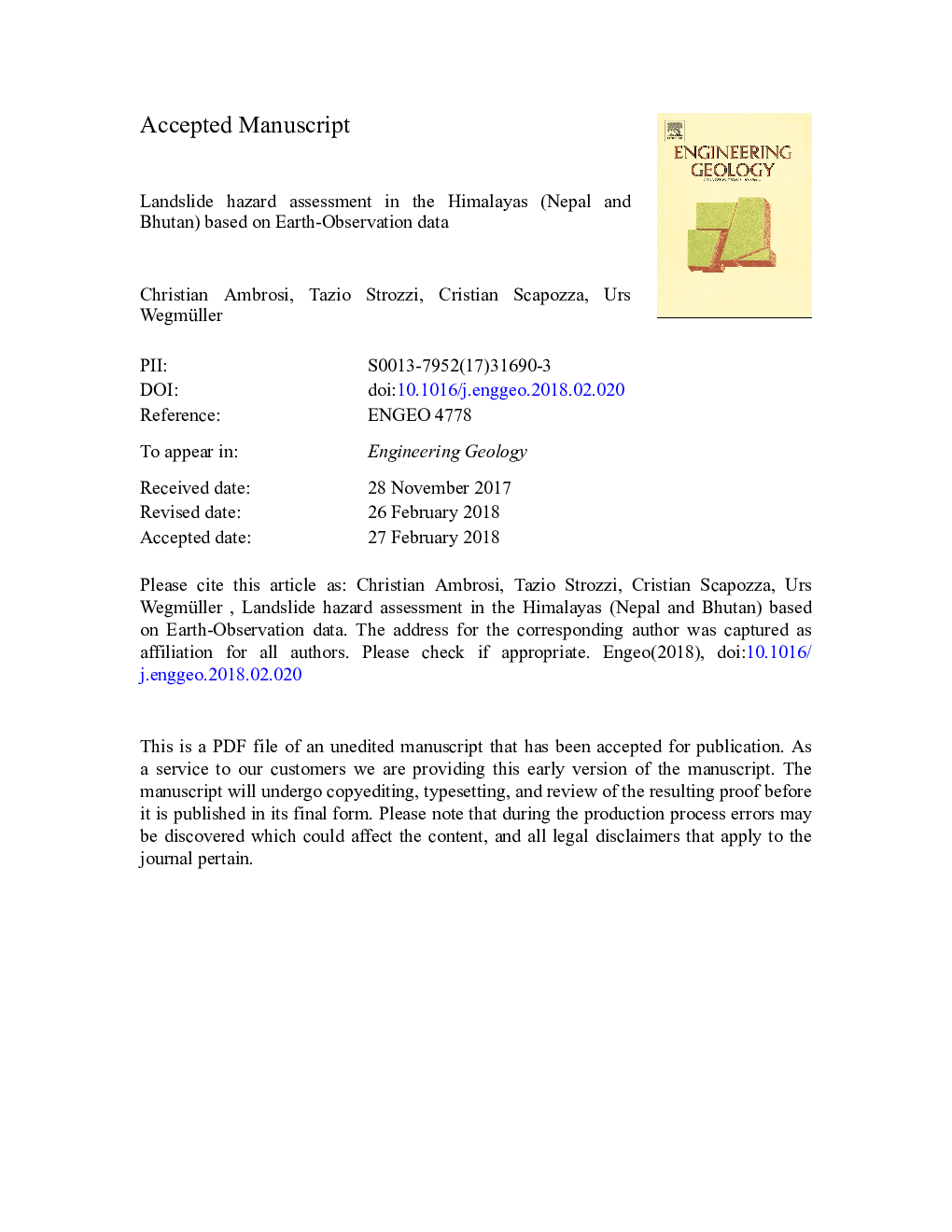| Article ID | Journal | Published Year | Pages | File Type |
|---|---|---|---|---|
| 8915935 | Engineering Geology | 2018 | 46 Pages |
Abstract
The Himalayan range is a high-risk area where landslides can destroy villages, access roads, and other important infrastructures and cause numerous injuries and deaths each year. Hazard assessment is one of the most important actions in the disaster risk management strategy with a direct impact on land use and land planning. Because of a lack of diffuse field data and mapping, landslide hazard maps are however not available for vast regions of the Himalayas. Earth-Observation (EO) data can support the preparation of landslide hazard maps through the compilation of landslide inventory maps at regional scale by means of satellite photo-interpretation and the assessment of the state of activity of mapped phenomena based on surface displacement rates quantified from satellite SAR interferometry. We compiled landslide inventory maps and landslide hazard maps for two areas in Nepal and Bhutan. For the Lukla region in Nepal, our analysis indicates that 10.5% of the total area of 725â¯km2 is affected by landslides and 57% of the mapped landslides are classified as active. For the Chomolhari area in Bhutan, 6% of the total area of 620â¯km2 is affected by landslides and 55% of them are classified as active. For both regions rockslides represent the most mapped phenomena. Landslide hazard assessment over large regions based on EO products represents an important aspect for disaster risk reduction not only in the whole Himalayan region but also in other mountain areas worldwide in absence of detailed landslide inventory maps.
Related Topics
Physical Sciences and Engineering
Earth and Planetary Sciences
Geotechnical Engineering and Engineering Geology
Authors
Christian Ambrosi, Tazio Strozzi, Cristian Scapozza, Urs Wegmüller,
